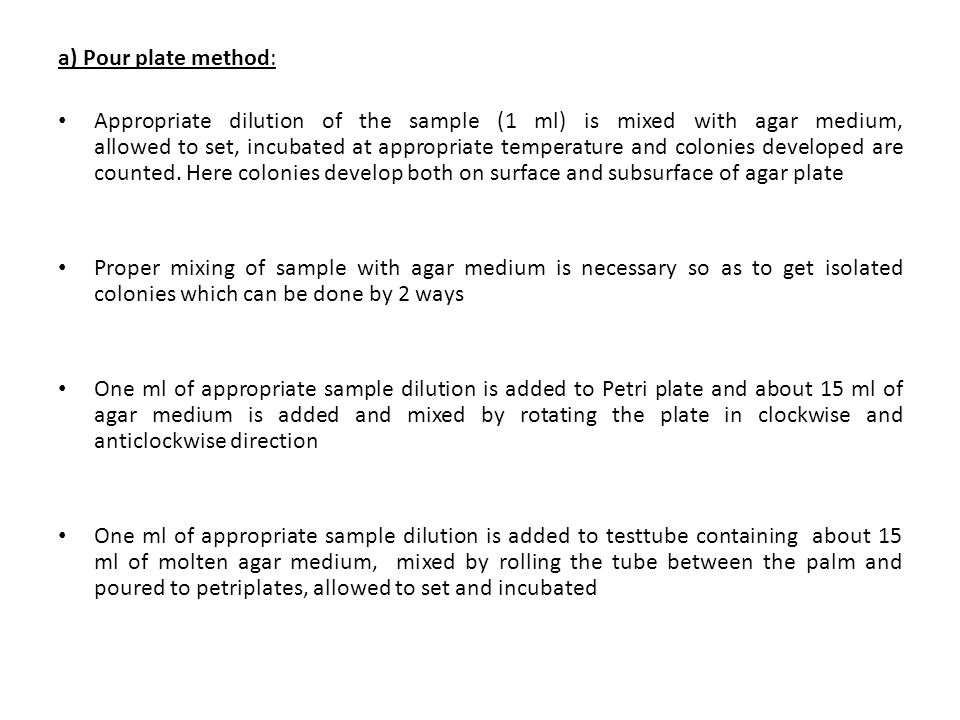Advantage And Disadvantage Of The Serial Dilution Agar Plate Procedure

Determining Bacterial CFU: A technique used in Microbiology to determine the exact number of cfu that is colony forming units in a bacterial suspension or homogenate is known as The Miles and Misra Method. This is a type of surface viable count technique.

Ms Office 97 Portable Free Download. FOOD TECHNOLOGY OPTIONS. (your end at 8o'clock) 6) Flame your loop this time instead of a set of lines start by overlapping the fourth set of lines and then draw a scribble into the middle of your plate using as much of the unused agar as possible. What are some advantages of an agar plate. What is the advantages and disadvantages to the serial dilution agar plate procedure. A dilution is how much concentration there is from the original. A dilution factor is the inverse of the dilution to find out how many organisms are in the dilution based on the count on the plate.
In 1938 Miles and Misra invented this method. In this method, Miles and Misra used dilution of S.pneumoniae on blood agar plate. To learn this technique completely, let us understand what is its pre-requirements of materials, its method, its advantages and disadvantages. Material Pre-requirements: •A calibrated automatic pipette or a dropping pipette, delivering drops of 20 μl.
• Sterilized nutrient agar plates •Diluent of Phosphate Buffered Saline (PBS) •Bacterial suspension or homogenate •Laminar Air Flow Bench •Filter Sterilized Isop-propyl alcohol Method • Serial dilution of the inoculums / suspension is done in which, the dilution of 1x suspension is added to 9x of diluent. Meridiana Keygenguru. In case of unknown sample quantity or unknown bacteria quantity, dilutions should be made to at least 10−8.
• The average of three plates is calculated. This is required to have greater assurance of results. All three plates are inoculated with each dilution. • A 20 μl drop is absorbed in the plate after 15-20 minutes of continuous spreading by natural means or rotation of plates.